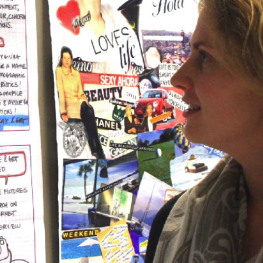Storytelling is the interactive art of using words and actions to reveal the elements and images of a story while encouraging the listener’s imagination, as it’s definition by the National Storytelling Network. For this chapter the focus relies on storytelling application for story presentation -a narrative development-, and how it captivates audiences. To discover new business opportunities and bring new solutions, designers use storytelling to get insights into users, build empathy and reach them emotionally. As the Interaction Design Foundation indicates, by crafting stories, designers can better understand what users want from a solution.
Storytelling is a helpful resource that can be used in many phases across the user-centered design (UCD) process, that is an iterative design process in which designers focus on the users and their needs in each phase of the design process. In UCD, design teams involve users throughout the design process via a variety of research and design techniques, to create highly usable and accessible products for them. For understanding user role, needs, goals and the reason for the goal, Storytelling is often paired with User and Personas Map, User Experience Journey Maps and , Storyboards among other ethnography activities. Those activities are mainly focused in one hand on observing people and their behaviour in context, and in another, on the human story and the ability of that story to communicate.
Keywords: Storytelling, User Experience, User, Needs, Insights, User-Centered Design, User experience (UX) design, Innovation, Strategic Design, Scenario, Data, Storyboard, Journey Mapping, User Profiles and Personas, User Experience, Customer Experience







